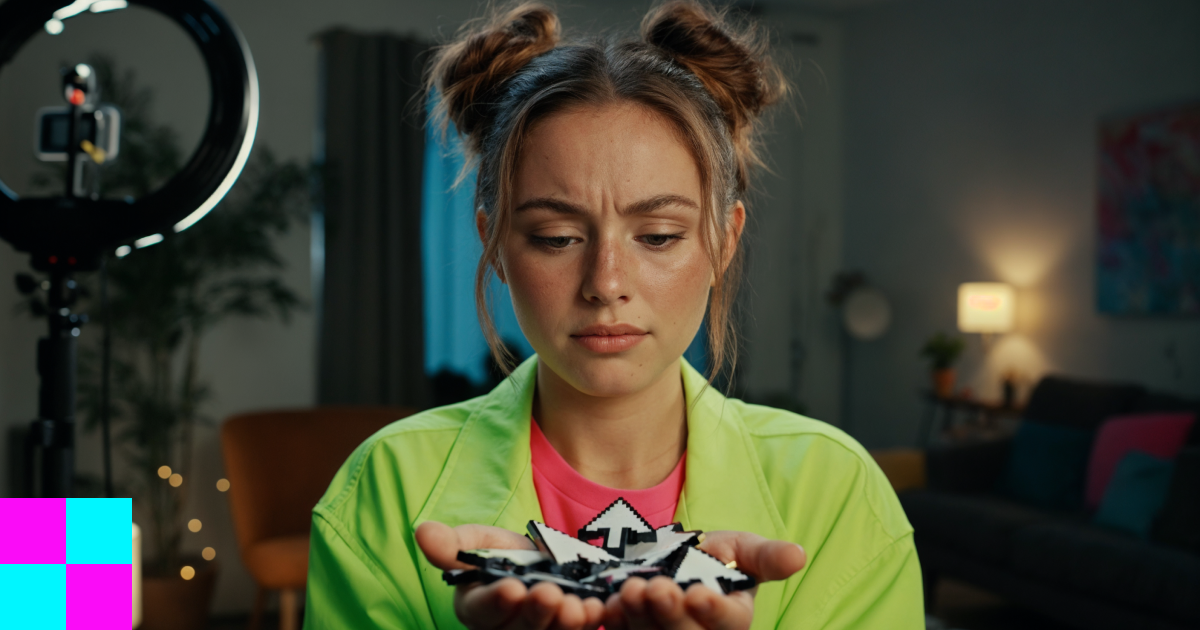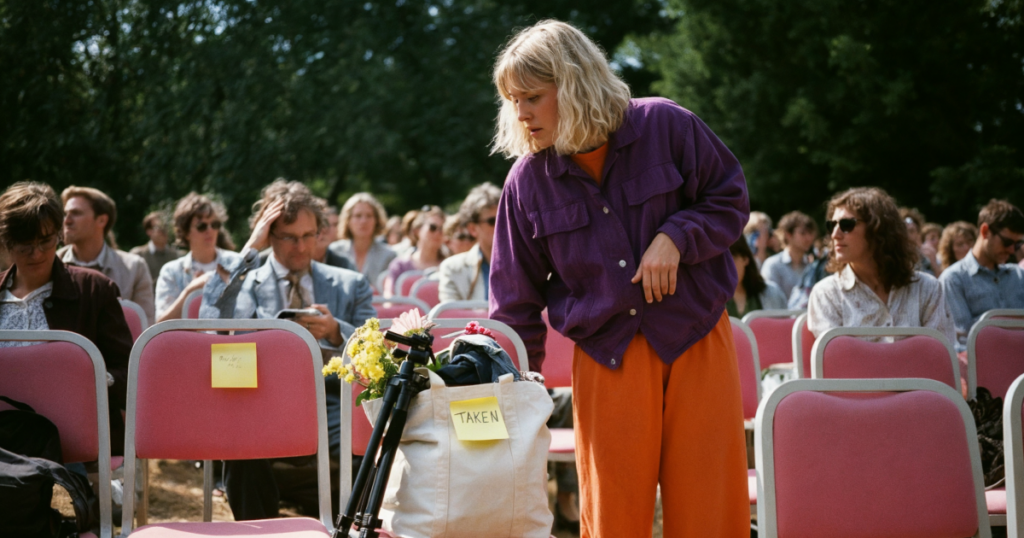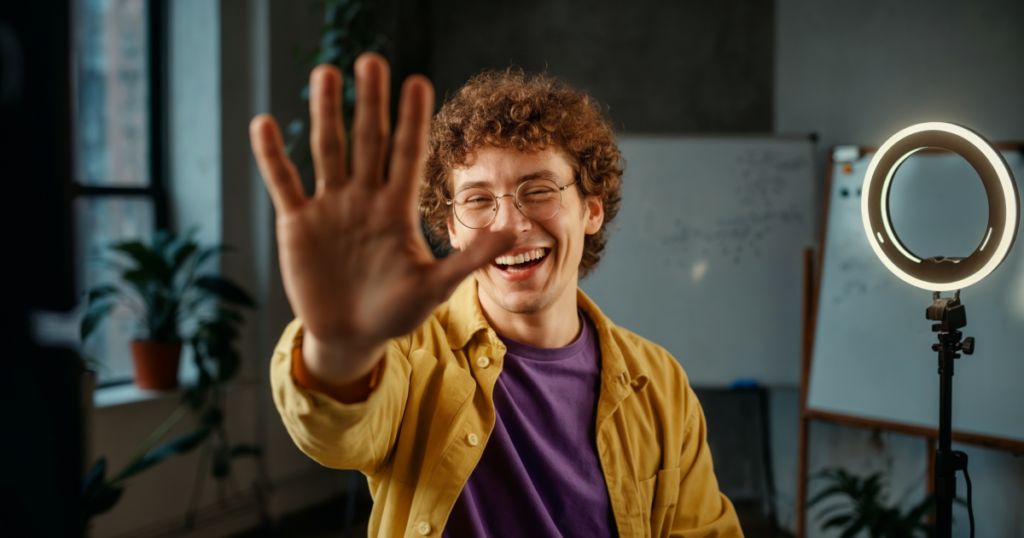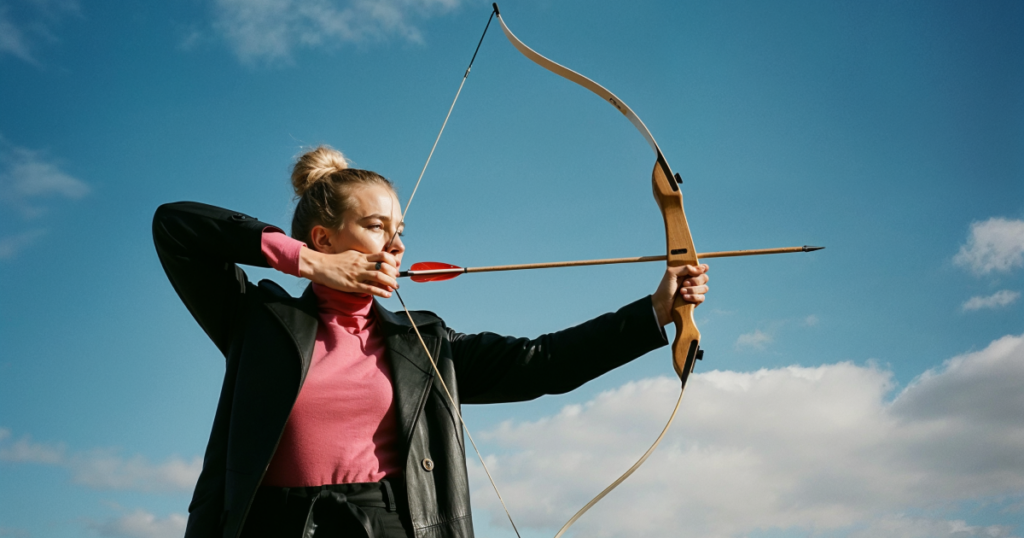Desperately Seeking: Clicks

Escrito por Nicholas Gaudio
septiembre 22, 2024
Creators of Instagram and the Dilemma of Ad Buying
Here in Bigtime Marketing World, we have a saying that you creators might find beneficial, if not totally lame:
“Desperate times call for increased ad spend.”
Alright.
We don’t actually have this saying, per se, but it would be totally true and cool of us if we did.
It’s one thing we marketers know to be truer than true: When you’ve tried everything else, you might probably need to throw some money at the problem to get past it.
Of course, I don’t mean indiscriminately burning cash (which some marketers also love to do).
What I’m suggesting here is that you challenge the old-headed belief that creators shouldn’t try all the methods available to achieve their goals — and that includes paying for ads.
And while I’m at it:

⚠️ Controversial opinion inbound! ⚠️
There’s never been an official word from Instagram ( 👀) or any other social media outlet that spending money with them on ads directly helps your organic reach; there’s a good deal of anecdotal evidence that suggests there’s a potential correlation between more money and more… everything else.
For instance:
“Warming” your audience: Paid promos create a pool of users who’ve interacted with your content. These users are more likely to see and engage with future organic posts.
Increased visibility can lead to more engagement: When you boost your posts, it leads to greater visibility. This can result in more followers and higher engagement, which helps your organic reach due to the algorithm favoring engaging content.
Account credibility: Some marketers (myself included) believe that consistent ad spending might signal to the platform that an account is a serious, active user, and that could lead to better treatment in organic reach.
Bonus Obviousness: It just makes sense that social media platforms would “reward” creators who are spending money on their platform. Think about it: If you were running a massive social media empire, wouldn’t you wanna encourage folks who are handing you money?

You: But am I truly desperate enough to spend my money on this?
Great question.
Ultimately, only you know, fam.
After all, most creators out there like to brag that they’ve grown 100% organically.
Sometimes it may feel like it’s standing room only on the major social media channels — with all the attention already gobbled up by entrenched forces (who’ve been there for longer).
New creators who hope to grow on Insta in particular face a unique challenge: How can you stand out in an increasingly crowded space while battling declining organic reach? (It’s common knowledge in marketing circles that things are getting tough out there. According to a 2024 study by Hootsuite, while Insta is still the best platform for audience engagement, the average rate of engagement has continued a downward trend.)
This drop has left many-a creator wondering how to maintain their hard-earned audience and continue growing their influence.
| Most, weirdly enough, don’t consider throwing money behind their best content. |
This guide will walk you through it all: When to know if you’re ready to boost, what to consider as you’re boosting, and how to maximize those boosts.
By the end, you’ll have a real strategy to lift that Instagram presence of yours with money.
Let’s start with the easy stuff.

Signs It’s Time to Boost Your Instagram Content
1. Shrinking Engagement Rates
The most obvious sign that it’s time to kick your stuff in the rear: a consistent decline in your engagement rate.
First, here’s how to actually calculate that rate:
- (Likes + Comments) / Followers x 100
Most experts agree that if your engagement rate falls below 1% for 7 or more consecutive posts, this is a strong indicator that boosting could help give your content a kick in the pants.
2. A Plateauing Follower Count/Growth
For Instagram accounts in the 5K-20K follower range, healthy organic growth typically hovers around 1.69% per month.
To put this into perspective:
- 5K followers should aim for ~90 new followers monthly
- 10K followers should target ~180 new followers monthly
- 20K followers should expect ~360 new followers monthly
If you’re consistently falling short of these numbers, strategic boosting can help increase your visibility and attract new followers.

3. Important Content Underperforming
When you’re launching a new product, announcing a collaboration, or sharing particularly valuable insights, you want to ensure maximum reach. Monitor these key posts closely:
- Check your posts’ performance after 24 hours
- Compare to your average reach and engagement
- If it’s underperforming by 20% or more, consider a boost
4. Seasonal Stuff
Every niche has its peak seasons.
A few examples include:
- Retail: November-December for holiday shopping
- Travel: June-August for, say, summer vacations
- Fitness: January-February for New Year’s resolutions
During these periods, competition for attention intensifies. Boosting your best content can help you capitalize on increased user interest and stand out from the crowd.
5. Algorithm Changes
To say Instagram’s algorithm is in constant flow is the understatement of the year. While the platform doesn’t always announce changes, you can spot them by monitoring your analytics. Look for:
- Sudden drops in reach across multiple posts (20% or more)
- Changes in the types of your content performing well
- Any weird shifts in optimal posting times
If you notice these signs, a strategic boost can help you adapt to the new algorithmic landscape and maintain your visibility.

Factors to Keep In Mind Before You Boost
1. Content Quality
Remember, boosting gives your content’s reach extra oomph — but it doesn’t improve the content itself. Before investing in a boost, it’s a good idea to make sure your content is actually worth the extra effort and cost.
Make sure you’re doing these three things:
- Strong initial engagement: Aim for something that’s getting at least a 2-3% engagement rate on organic reach.
- Compelling captions: Clear message, call-to-action, relevant hashtags.
- Accurate claims: Instagram literally won’t run your ad if it’s false or misleading. So don’t do that.
2. Budget
This one is easy: Start small, test different approaches, and scale up based on performance. Understanding the costs associated with boosting is crucial for effective planning:
- Average cost per click for Instagram ads: $1.25
- Recommended starting budget: $5-$10 per boost
- Optimal daily budget for sustained campaigns: $20-$50 (depending on your goals)

3. Audience Targeting
Use Instagram Insights to understand your current audience and inform your targeting decisions. From there, Instagram targeting options are powerful but can be pretty overwhelming. We recommend you focus on:
- Demographics similar to your most engaged followers
- Interests aligned with your content niche
- Behaviors that indicate potential interest in your offerings
4. Timing
Timing can significantly impact your boost’s effectiveness:
- Best times to post on Instagram: Tuesdays and Wednesdays, 10 AM to 1 PM
- Consider your specific audience’s active times (check your Insights)
- For time-sensitive content, start your boost 24-48 hours before peak relevance
5. Content Type
Different content types perform differently on Instagram:
- Carousel posts get 1.4x more reach than single image posts (Be Funky)
- Reels have the highest average engagement rate at 1.16% (Iconosquare)
- Video posts receive 20% more interactions than static images, particularly when they have captions overlaid (Databox)
We recommend boosting your best-performing content to maximize the results.

The 5 Best Practices for Boosting Content
1. Set Goals
Having clear KPIs will help you measure the effectiveness of your boosted content. Before boosting, you’re going to want to define what success looks like. Are you particularly trying to:
- Increasing followers: Target cost per follower
- Driving website traffic: Set a goal for click-through rate
- Boosting engagement: Aim for a specific engagement rate increase
2. Always Be A/B Testing
Don’t rely on guesswork — use data to optimize your boosted posts:
- Make 3 versions of your ad with slight variations of only one aspect (e.g., different headlines, visuals, or CTAs)
- Use Instagram’s split testing feature to determine which performs best
- It’s important to allocate 20% of your budget to testing before scaling up

3. Use Instagram’s Targeting Tools
If you know who really likes your stuff, use Instagram’s advanced targeting options:
- Create lookalike audiences based on your current followers
- Use custom audiences to retarget users who have interacted with your content
- Experiment with interest-based targeting to reach new potential followers
4. Monitor and Adjust As Needed
Boosting isn’t a “set it and forget it” strategy. You’ve got to keep an eye out on:
- Instagram Insights to track performance daily
- Emerging patterns in what’s working (and, yes, what’s not)
- Be prepared to adjust your targeting, budget, or content based on the data
5. Don’t Go Overboard
While boosting can be effective, it shouldn’t dominate your strategy! Most experts agree that you should balance in these three ways:
- Aim for an 80-20 ratio of organic to promoted content
- Use boosting to complement, not replace, your organic efforts
- Continuously create high-quality organic content to maintain authenticity

In the end…
For all of you Instagram creators, boosting stuff can actually be the key to breaking through those plateaus, overcoming algo challenges, and getting back to your path to growth. Remember: Use what you’ve got (any data available to you), start with small experiments, and continuously test and refine your approach as you go.
Just remember: Sometimes, desperate times do indeed call for increased ad spend.
And now, you’re more of a marketer than you probably wanted to be.
